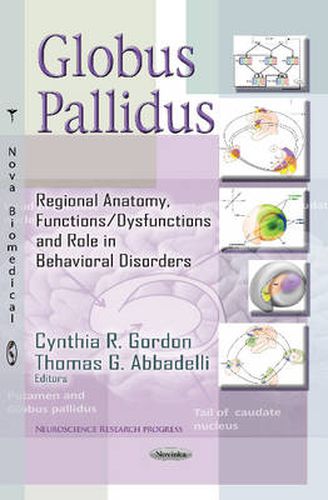Readings Newsletter
Become a Readings Member to make your shopping experience even easier.
Sign in or sign up for free!
You’re not far away from qualifying for FREE standard shipping within Australia
You’ve qualified for FREE standard shipping within Australia
The cart is loading…






The globus pallidus is a structure in the brain involved in the regulation of voluntary movement. It is part of the basal ganglia, which, among many other things, regulate movements that occur on the subconscious level. In this book, the authors present current research in the study of the regional anatomy, functions/dysfunctions and role in behavioural disorders of the globus pallidus. Topics discussed include imaging of the globus pallidus in patients suffering from pantothenate kinase-associated neurodegeneration (PKAN); anatomofunctional territories and pathophysiological relations in the globus pallidus; a population activity model of cortico-striatal circuitry underlying behavioural inhibition in rats; and the neuropathology of the basal ganglia and its role in the Parkinsonian syndromes with special reference to the globus pallidus.
$9.00 standard shipping within Australia
FREE standard shipping within Australia for orders over $100.00
Express & International shipping calculated at checkout
The globus pallidus is a structure in the brain involved in the regulation of voluntary movement. It is part of the basal ganglia, which, among many other things, regulate movements that occur on the subconscious level. In this book, the authors present current research in the study of the regional anatomy, functions/dysfunctions and role in behavioural disorders of the globus pallidus. Topics discussed include imaging of the globus pallidus in patients suffering from pantothenate kinase-associated neurodegeneration (PKAN); anatomofunctional territories and pathophysiological relations in the globus pallidus; a population activity model of cortico-striatal circuitry underlying behavioural inhibition in rats; and the neuropathology of the basal ganglia and its role in the Parkinsonian syndromes with special reference to the globus pallidus.